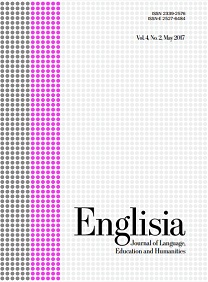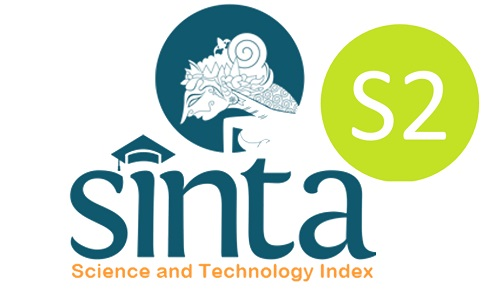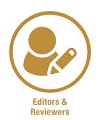Dynamic EFL learning application through assemblr EDU for student’s creative writing
DOI:
https://doi.org/10.22373/ej.v12i2.27507Keywords:
Assemblr Edu, Learning Media, technology, Creative Writing, Online applicationAbstract
Technological advancements hold immense potential for transforming teaching and learning, yet many students struggle to effectively harness digital tools, especially in creative writing. Assemblr EDU (edu.assemblrworld.com), an application that leverages 3D and Augmented Reality (AR) technology, enables users to craft interactive and engaging educational content. Despite its availability as a free resource, a persistent gap in students’ digital literacy prevents them from fully exploiting tools like assemblr EDU for academic purposes. This study explores how assemblr EDU can spark interest in EFL (English as a Foreign Language) learning and elevate learning outcomes. Employing a qualitative descriptive approach, the research involved 38 university students and found that assemblr EDU significantly enhances the development of captivating, interactive learning materials. Students reported that visualizing characters and story elements through the platform made creative writing more enjoyable, effectively bridging the digital literacy divide while cultivating an immersive and motivating learning environment. Ultimately, this approach markedly improves students’ creative writing abilities and overall EFL proficiency.Downloads
References
Ahmad, Z., Ahmad, H., & Rahman, Z. Abd. (2022). Penggunaan Media Pembelajaran Augmented Reality Berbantuan Assemblr Edu untuk Meningkatkan Hasil Belajar Siswa SMA Negeri 5 Kota Ternate. Jurnal Ilmiah Wahana Pendidika, 8(23).
Alfisuma, M. Z., Pujiati, T., Sudarso, H., & Kiptiyah, M. (2023). Students ’ Perceptions of the Use of ICT in. 4778, 1754–1772. https://doi.org/10.24256/ideas.v11i2.4335
Andini, R. P., Mulyana, E. Y., & Arjulayana, A. (2020). Group Investigation Technique on Indonesian High School Students’ Writing Skill. Globish: An English-Indonesian Journal for English, Education, and Culture, 9(1). https://doi.org/10.31000/globish.v9i1.2333
Arjulayana, & Srikandi, C. N. (2019). Early semester student needs in English mastery to support teaching and learning process in English department. Asian EFL Journal, 24(4).
Athor, C., bt Osman, R., Swee Choo, P., & Khairezan Rahmat, M. (2013). Understanding Student Teachers’ Behavioural Intention to Use Technology: Technology Acceptance Model (TAM) Validation and Testing. In International Journal of Instruction (Vol. 6, Issue 1). www.e-iji.net
Banks, G. C., Dionne, S. D., Sayama, H., & Schmid, M. (2019). Leadership in the Digital Era: Social Media, Big Data, Virtual Reality, Computational Methods, and Deep Learning. The Leadership Quarterly, 30(4), I–II. https://doi.org/10.1016/s1048-9843(19)30427-8
Barani, G., Mazandarani, O., & Rezaie, S. H. S. (2010). The effect of application of picture into picture audio- visual aids on vocabulary learning of young Iranian ELF learners. Procedia - Social and Behavioral Sciences, 2(2), 5362–5369. https://doi.org/10.1016/j.sbspro.2010.03.874
Carrión, F., Verónica, R., Alba, E. C., & Vargas-Saritama. (2023). The Use of Augmented Reality through Assemblr Edu to Inspire Writing in an Ecuadorian EFL Distance Program. International Journal of Engineering Pedagogy, 13(5). https://doi.org/10.3991/ijep.v13i5.38049
Chairudin, M., Nurhanifa, Yustianingsih, T., Aidah, Z., Atoillah, & Hadi, M. S. (2023). Studi Literatur Pemanfaatan Aplikasi Assemblr Edusebagai Media Pembelajaran Matematikajenjang Smp/Mts. Jurnal Pengabdian Masyarakat Universitas Pahlawan Tuanku Tambusai, 4(2).
Eriyani, E., Rizal, Y., & Pratiwi, A. (2021). SCAFFOLDING THE CREATIVE WRITING OF JENIUS WRITING STUDENTS. RETORIKA: Jurnal Bahasa, Sastra, Dan Pengajarannya, 14(2). https://doi.org/10.26858/retorika.v14i2.18890
Fahmi, F., & Arjulayana, A. (2024). Digital Translation Literacy of Undergraduate EFL Students. Metathesis: Journal of English Language, Literature, and Teaching, 7(2), 240–252. https://doi.org/10.31002/metathesis.v7i2.561
Fortuna, C. C., Arjulayana, & Sutikno, E. U. (2024). Examine task-based learning (TBL) in students’ writing skills. International Undergraduate Conference on English Education, 327–336.
Fuadin, A., Aziz, F.-, Fauziya, D. S., & Arjulayana, A.-. (2023). Project-Based Integrated Learning in Improving 21St Century Interpersonal Language Communication Skills. Globish: An English-Indonesian Journal for English, Education, and Culture, 12(1), 90. https://doi.org/10.31000/globish.v12i1.7842
Göçen, G. (2019). The effect of creative writing activities on elementary school students’ creative writing achievement, writing attitude and motivation*. Journal of Language and Linguistic Studies, 15(3). https://doi.org/10.17263/jlls.631547
Gu, M. M., Patkin, J., & Kirkpatrick, A. (2014). The dynamic identity construction in English as lingua franca intercultural communication: A positioning perspective. System, 46(1). https://doi.org/10.1016/j.system.2014.07.010
Gumilar, G., Rosid, D. P. S., Sumardjoko, B., & Ghufron, A. (2023). Urgensi Penggantian Kurikulum 2013 menjadi Kurikulum Merdeka. Jurnal Papeda: Jurnal Publikasi Pendidikan Dasar, 5(2). https://doi.org/10.36232/jurnalpendidikandasar.v5i2.4528
Hilman, Bahaf, A. M., Irma, D., Ulhiyati, Wulan Maharani, Febriani, I. M., Dami, & Andini, Si. A. T. (2023). The Effect Of Utilizing Assemblr On Students’ Reading Interest In 5th Grade Students Of SDIT Widya Cendekia. Journal of Professional Elementary Education (JPEE), 2(10.46306/jpee.v2i2).
Hoe, S. L. (2020). Digitalization in practice: the fifth discipline advantage. In Learning Organization (Vol. 27, Issue 1). https://doi.org/10.1108/TLO-09-2019-0137
Hortin, J. (1983). Visual literacy and Visual Thinking. In Contributions to the study of visual literacy (pp. 92–106).
Jewitt, C. (2008). Multimodality and literacy in school classrooms. Review of Research in Education, 32, 241–267. https://doi.org/10.3102/0091732X07310586
Kurniawan, P. Y., Nisa, E. K., Sari, F. K., & Ramdhan, N. A. (2024). Revolutionizing Language Learning: Exploring the Efficacy of Augmented Reality Technology Through Assemblr Studio. E3S Web of Conferences, 500. https://doi.org/10.1051/e3sconf/202450001020
Lastari, D. S., & Arjulayana. (2022). STUDENTS ’ PERCEPTION S OF ICT UTILIZATION FOR LEARNING GRAMMAR IN ONLINE CLASS Dyah Supraba Lastari University of Muhammadiyah Tangerang Arjulayana. UHAMKA International Conference on ELT and CALL (UICELL), December, 22–23.
Lino Padang, F. A., Ramlawati, Yunus, S. R., & Samputri, S. (2021). Penerapan Media Assemblr Edu Berbasis Augmented Reality untuk Meningkatkan Motivasi Belajar Peserta Didik Kelas VII SMPN 3 Makassar. Prosiding Seminar Nasional Pendidikan IPA II.
Ningtyas, D. T. (2022). PENGGUNAAN APLIKASI ASSEMBLR EDU “KONTEN MENDONGENG” BERBASIS AUGMENTED REALITY UNTUK MEMBENTUK KARAKTER ANAK. JEJARING TEKNOLOGI METAVERSE.
Nuraini, R., Madah Khulaili Harsya, R., Meiyenti, I., & Agustina, I. (2024). Education On Simplifying Digital-Based Village Administrative Affairs. Ika Agustina Journal of Human And Education, 4(1), 36–41.
Nurhasana, P. D., Aryaningrum, K., Kuswidyanarko, A., Fakhurdin, A., Pratama, A., Riyanti, H., Selegi, S. F., Anggraini, D., & Kalsum, U. (2022). PELATIHAN INOVASI MEDIA PEMBELAJARAN BERBASIS AUGMENTED REALITY (AR) MELALUI APLIKASI ASSEMBLR PROGRAM STUDI PENDIDIKAN GURU SEKOLAH DASAR [TRAINING ON LEARNING MEDIA INNOVATION BASED ON AUGMENTED REALITY (AR) THROUGH THE ASSEMBLR APPLICATION FOR STUDY PROGRAM OF ELEMENTARY SCHOOL TEACHER EDUCATION]. Jurnal Sinergitas PKM & CSR, 6(1). https://doi.org/10.19166/jspc.v6i1.4957
Petrilli, S. (2014). Sign study and Semiothics : Communication, Translation, and Values. Walter de Gruyter, Inc.
Plate, D., & Hutson, J. (2022). Augmented Creativity: Leveraging Natural Language Processing for Creative Writing. Art and Design Review, 10(03). https://doi.org/10.4236/adr.2022.103029
Prasetiawati, R. A., Hidayat, W., & Hendriana, H. (2023). The Development of Discovery Learning Assisted by Geogebra and Assemblr Edu Application to Increase Juinor High School Studentsâ€TM Understanding Ability on Geometry. (JIML) JOURNAL OF INNOVATIVE MATHEMATICS LEARNING, 6(1). https://doi.org/10.22460/jiml.v6i1.15340
Rosyidah, L. I., Khatijah, A., & Dwi fita heriyawati. (2023). Learning English With Assembl Edu- based Augmented Reality: Does The Learning Media Matter? Ethical Lingua: Journal of Language Teaching and Literature, 10(2). https://doi.org/10.30605/25409190.617
Samala, A. D., Usmeldi, Taali, Daineko, Y., Indarta, Y., Nando, Y. A., Anwar, M., Jaya, P., & Almasri. (2023). Global Publication Trends in Augmented Reality and Virtual Reality for Learning: The Last Twenty-One Years. International Journal of Engineering Pedagogy, 13(2). https://doi.org/10.3991/ijep.v13i2.35965
Savage, E. (2017). The emancipatory personal essay? TEXT, 21(Special 39). https://doi.org/10.52086/001c.26087
Sugiarto, A. (2021). Penggunaan Media Augmeted Reality Assemblr Edu untuk Meningkatkan Pemahaman Konsep Peredaran Darah. Madaris: Jurnal Guru Inovatif, 1(2).
Supraba Lastari, D. (2022). STUDENTS’ PERCEPTIONS OF ICT UTILIZATION FOR LEARNING GRAMMAR IN ONLINE CLASS.
Downloads
Published
Issue
Section
License
Copyright (c) 2025 Arjulayana arjulayana, Tri Pujiati

This work is licensed under a Creative Commons Attribution 4.0 International License.
Proposed Policy for Journals That Offer Open Access
Authors who publish with Englisia journal agree to the following terms:
- Authors retain copyright and grant the journal right of first publication with the work simultaneously licensed under a Creative Commons Attribution License that allows others to share the work with an acknowledgement of the work's authorship and initial publication in this journal.
- Authors are able to enter into separate, additional contractual arrangements for the non-exclusive distribution of the journal's published version of the work (e.g., post it to an institutional repository or publish it in a book), with an acknowledgement of its initial publication in this journal.
- Authors are permitted and encouraged to post their work online (e.g., in institutional repositories or on their website) prior to and during the submission process, as it can lead to productive exchanges, as well as earlier and greater citation of published work (See The Effect of Open Access).









